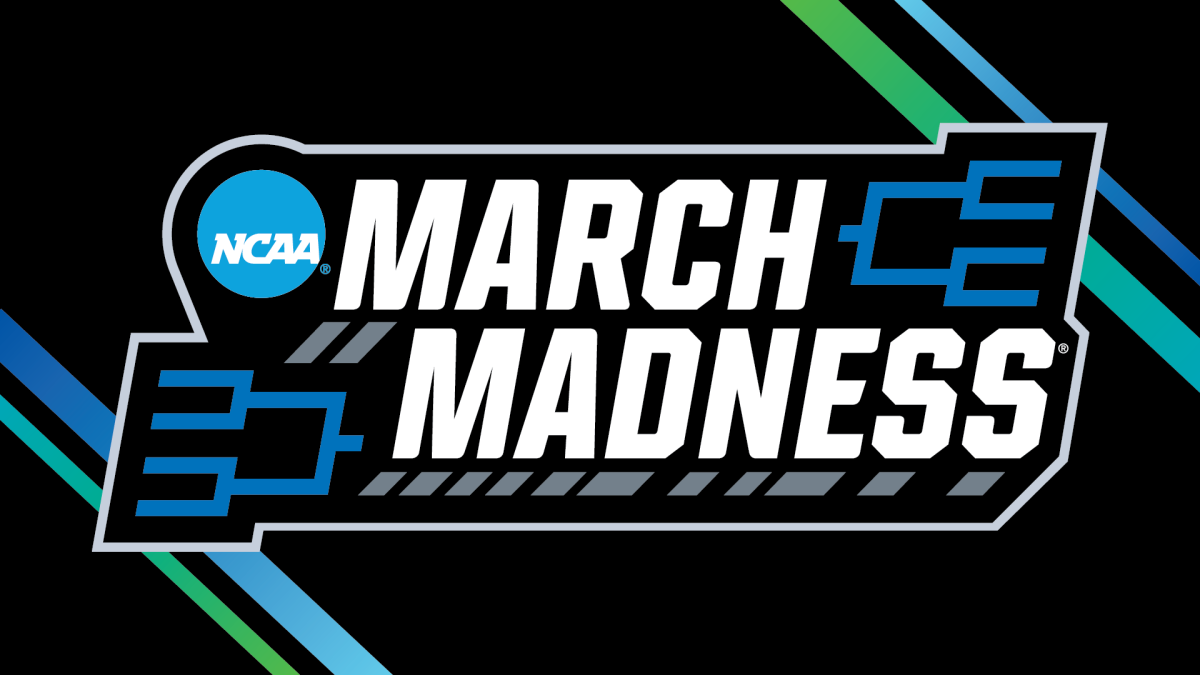If you’ve been paying any attention to men’s college basketball for most of the regular season, you probably know that this season was not smooth sailing for the elite teams. Late into the season, the top 10 AP-ranked teams had a losing record on the road against unranked teams, which is extremely rare in college hoops. Besides for UConn, Houston, and Purdue, there was a lot of movement between the ranked teams in terms of seeding.
But even they didn’t evade a few uncharacteristic losses, though. Specifically, Uconn lost by almost twenty points to Creighton, Houston got blown out by Iowa State in their conference championship, and Purdue lost to four unranked Big 10 teams. Due to the unpredictable regular season, many expected the tournament to be chaotic, similar to last season’s tournament, which saw no number-one seeds make the Final Four. March Madness, though, never fails to defy expectations; for the most part, this season truly was madness.
East
The East region of the bracket had the aforementioned UConn Huskies — the favorite and the winners of last year’s tournament — as their one seed. They did have their fair share of challenges in their region, having:
- 2 seed Iowa State, who had the number one defense in the country.
- 3 seed Illinois, who opposingly had the number one offense in the country.
- 4 seed Auburn, ranked the fourth best team in the country statistically according to Kenpom.
- 5 seed San Diego State, which played UConn last year in the championship.
Going into the tournament, Auburn was the team out of those four that caught my eye as the possible giant slayer of UConn. They were one of the hottest teams in the country at that point and seemed like a decent bet, being overqualified, according to Kenpom, for their respective seed. But just as soon as the Tigers were in the tournament, they were gone, losing to 13 seed Yale in the first round, displaying how previous success means close to nothing when it comes to March.
Despite a stingy draw in terms of competition, UConn trounced the region, winning all their games by at least 17 points, booking a ticket to the final four. Their incredibly deep roster paired with outstanding stars is a recipe for success. They are exceptional at every facet of the game, which makes them a matchup nightmare for other teams, and clearly, none of the teams in this region stood a chance.

West
The West region also contained an interesting mix of teams, topped by the 1-seeded North Carolina Tar Heels. The possible contenders to represent the West in the Final Four were:
- 1 seed North Carolina, the most complete team in the region led by Seniors Armando Bacot and ACC Player of the Year RJ Davis.
- 2 seed Arizona, who also had a deep team and was led by former Tar Heel, Caleb Love.
- 3 seed Baylor, was a very scary team offensively as the 5th best 3-point shooting team in the nation.
- 4 seed Alabama, who many overlooked due to their poor defense, yet they played with a pace so fast offensively that they looked like track stars at points.
One team in the West that so many overlooked was 6-seeded Clemson. The main reason for them going under the radar was their poor record of losing 3 out of the last 4 going into the tourney. During the regular season they ranked as pretty mediocre in all statistical facets of the game, which also turned people away. But come tournament time they showed up, making a deep run until the Elite Eight.
The outcome of this bracket was probably the hardest to predict. Most people favored UNC and Arizona but neither of those were confident locks. Indeed, both team lost in the Sweet 16 to 4-seed Alabama and 6-seed Clemson respectively. This set up an unexpected 4 v 6 matchup in the Elite Eight. I will say this: Alabama was by far the most fun team to watch in the tournament. The pace they played at was astounding and all their players were straight buckets. Going against Clemson, I wasn’t confident what the outcome would be, but sure enough Alabama’s electric offense was too much for Clemson to handle, which secured them a spot as the second team in the Final Four.
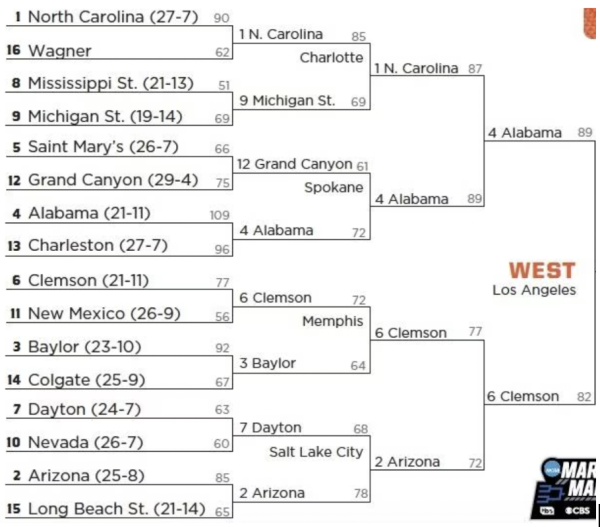
The South Region, with its unique mixture of teams, had possibly the most exciting matchups of any region, containing the:
- 1 Seed Houston Cougars who boasted the second best defense and nineteenth-best offense in the country.
- 2 seed Marquette Golden Eagles who were led by stellar point guard Tyler Kolek.
- 3 seed Kentucky Wildcats, the most interesting team in the bunch. Unlike most years they had a decent amount of veterans on the roster mixed with incredible freshmen Rob Dillingham and Reed Sheppard. Similar to Alabama, Kentucky had a top 10 offense, but didn’t even scrape the top 100 defensively.
- 4 seed Duke Blue Devils with a very strong starting five, highlighted by center Kyle Filipowski and freshman guard Jarred McCain.
A team many didn’t see going very far through the region was 11 seed North Carolina State. They finished the regular season with a 17-14 record which meant they would have to win the ACC Tournament if they wanted a bid in March Madness. Sure enough, they did just that, winning five games in five days. With that streak, it brought a difficult physical toll on the players, which analysts assumed would catch up with them. But they proved to be one of the toughest teams in the tournament because that toll didn’t seem to phase them one bit. They started off by defeating 6 seed Texas Tech in the first round pretty comfortably. In the next round, they faced 14 seed Oakland, who had majorly upset Kentucky in the game previously, and it went into overtime yet the NC State Wolfpack prevailed. Continuing on their journey they faced 2 seeded Marquette who they once again dispatched with the combination of DJ Burns and DJ Horne being unstoppable, which I’ll get to later.
Duke came into the tournament being viewed as “Too green, too inexperienced, too soft”. As a viewer, you could tell they wanted to shake this image as they triumphed over their first two opponents. Their first challenge was against 1 seed Houston, in the Sweet Sixteen. The game started neck and neck while being quite low scoring. In the first half, Houston was dealt a hefty blow with their star point guard Jamal Shead receiving a game ending ankle injury. From there, they handily won the game, setting up an all ACC Elite Eight game against NC State. Even Duke wouldn’t be enough to stop the Wolfpack though, as all their players, except Jarred McCain who scored half the team’s points, performed poorly. This set up the Wolfpack to be the third team installed into the Final Four in Phoenix, which extended the streak of 7 seeds or lower making the Final Four 10 out of the last 11 seasons.
Midwest
The final region in the bracket, the Midwest, consisted of four realistic contenders:
- 1 seed Purdue Boilermakers led by 7 foot 4 Center, Zach Edey, the unanimous pick as the best player in the country for the second year straight. Last year the Boilermakers were in a similar situation, being a 1 seed, but became the second team ever to lose to a 16 seed in the first round. Understandably this horrific loss would paint this year’s tournament as a revenge run in their eyes.
- 2 seed Tennessee Volunteers had the second best player in the country in Forward Dalton Knecht. As talented a player he was they were built on a very strong defense which would be key if they were to make a run.
- 3 seed Creighton Bluejays arguably had the best starting five in the tournament, yet had a very shallow bench.
- 5 seed Gonzaga Bulldogs in a similar fashion to Creighton, had an immensely talented starting five, but not much to back the starters up on the bench.
This region out of the four, finished the most predictably with those four teams all making it to the Sweet Sixteen. As Purdue matched up with Gonzaga it became very apparent how influential Zach Edey was on the court. Not only did he average 30 points and 16 rebounds throughout the tournament, but his size made him nearly unguardable, forcing opposing defenders to foul him for any chance of stopping him. This led to many of those defenders fouling out of the game as well as giving Purdue crazy amounts of free throws.
So yes, they beat Gonzaga moving forward to the Elite Eight. Tennessee, meanwhile, faced Creighton which proved as a game of single-team runs and many lead changes. But ultimately Knecht and Co. handled the Bluejays, setting up an intriguing game against Purdue which I’ll go over later in the article. Purdue was victorious sending them as the final team in the Final Four.
Final Four
The matchups were finally set: 1 seed UConn vs. 4 seed Alabama, and 11 seed NC State vs. 1 seed Purdue. With UConn’s dominance over their region, it would take a spectacular effort. Alabama’s only chance at beating them would be to outshoot them by a good margin outside the arc along with a solid defensive performance to get some stops at least. Through the first 30ish minutes that’s exactly what the Crimson Tide did, shooting around 50% from three and keeping the score within single digits- something that no other team had done to UConn. UConn was just too good though, pulling away in the final 10 minutes of the game winning 86-72. I haven’t mentioned many of their players but my god are they good. Donovan Clingan their center, who is 7’2”, is phenomenal defensively and offensively. Their starting three guards were all large, being at least 6’4”, which along with their offensive talent brings a matchup nightmare defensively since smaller opposing guards aren’t used to this sort of length contesting shots. Additionally, they had two subs that showed no dropoff when they were on the court, which is so important if you need to rest starters during the game. So yes, as expected, UConn paved their way to the championship with a chance at winning back-to-back national titles.
In the other semifinal, NC State attempted to be the David to take down Goliath — literally — in Purdue and Zach Edey. For this to happen they would need to suppress Edey along with good play from their stars. They did indeed stop Edey as much as they could, as he had his worst game of the tournament having 20 points and 5 turnovers. Purdue overall played pretty poor too with 16 turnovers. With all of this said you would think that NC State would take advantage of this, giving them a chance to win. Yet their “Cinderella run” would end abruptly as everyone, barring DJ Horne, played inadequately shooting 37% from the field and 26% from 3. Their magic seemed to run out right as they were on the verge of achieving something special, trying to follow in the footsteps of Jimmy Valvano’s 1983 championship winning NC State team who shared so many parallels to the current squad. Lighting did not strike twice for the Wolfpack, which sent Purdue to faceoff against UConn in the final.
The battle of the big men. Throughout the whole tournament, something became apparent for many fans watching. Big men have become the most important players in college basketball. If you have a quality 7 foot + tall center it gives your team such a large advantage on both sides of the court. Offensively, you can just feed the ball into them, which leaves only two options: 1, double team him, creating an open player that the big man can dish it to for an open look, or 2, fail to double team him, which lets him post up and shoot a shot that they make relatively 60% of the time or 3. Oftentimes, they get fouled and shoot free throws. They also create so many second chance opportunities with their elite rebounding ability, so even if a player misses your team can get one or two more attempts on the same possession. Defensively, they provide a roadblock in the paint, preventing many easy layups and dribble drives. On top of that, if you surround that big man with elite guards and forwards, it makes a near-instant recipe for success. With that said it came as no surprise that the two teams in the final were composed that exact way. Now, what happens when the two best big men in the country nullify each other out?
As much as the final was about Clingan vs. Edey, it was even more about which set of guards would step up more. UConn with their three headed monster of Castle, Spencer, and Newton, or Purdue with Braden Smith and Fletcher Loyer. Early on, Purdue displayed that they would win or die through Edey, and they depended on him the whole game to keep it close. A valid strategy against many teams, but not the Huskies. Edey scored 37 points out of the team’s 60, which proved how much they ended up depending on him and he did deliver, but basketball is a team game at the end of the day. Purdue’s supporting cast did not show up and UConn’s did, and then some. It’s honestly hard to even call them a “supporting cast” considering how talented they are, and they just ran Purdue into the ground. 75-60 the final score in favor of the UConn Huskies securing their back-to-back status, at what could become a dynasty under coach Dan Hurley.
GAME OF EACH ROUND
ROUND OF 64: #3 KENTUCKY VS. #14 OAKLAND
Out of all the rounds picking this one would be the hardest as there are a plethora of high quality contests that would be worthy of this selection. But in the end, my heart leaned towards possibly the upset of the tournament with Oakland taking down Kentucky. As mentioned earlier, Kentucky is a team that has an elite offense, but they rely on it to win games as their defense is nowhere near the best. If their offense doesn’t perform outstanding, they will lose 9 times out of 10, and that’s exactly what happened here. They shot okay (43% from the field and 32% from 3) but again their awful defense requires better offensive efficiency, even against a far inferior opponent like Oakland.
Props to Oakland though who took advantage of an off day from Kentucky. Their win primarily centered around the sensational shooting day from Jack Gohlke, a senior 6th man guard, who shot 10/20 from 3 point range. It seemed as if they could give it to him anywhere on the court and he would immediately jack up a three and somehow make it. As crazy as this seems, I can’t help but laugh at the Kentucky scouts since shortly after the game a statistic came out for Gohlke, 335 out of 343 of his shots this entire season have been three-pointers. How in the world did they not immediately tell their players to contest him from outside the arc? That is literally all he does! It took the Kentucky guards about halfway through the game to figure out Gohlke is lethal from three-point range, but by then it was too late: he had caught fire.
ROUND OF 32: #1 HOUSTON VS. #9 TEXAS A&M
Coming into the tournament the Houston Cougars were listed as having the second-best odds to win the tournament. The whole year they have been carried by their hustle, work hard mentality on defense, which has proven to be hard to beat. They aren’t the best shooting team on offense, with most of their points coming from inside the paint. Anyways, they came into the second round game matched up against a Texas A&M team that, like many SEC teams this year, was centered around an electric offense. Every time you get an elite defensive team matched up against an elite offensive team it’s always a worthwhile watch, and this game did not disappoint. For most of the game, Houston was leading by a slim margin, which kept A&M in it. Towards the end of the second half, though, Houston looked like they would pull away comfortably having a 79-69 lead with 2:11 left in the game. Houston being such a physical team does get flirty with foul trouble, and in this game, they went a little too far. At one point two or three of their starters had fouled out and all the others had 4 fouls, which makes defending very difficult. Texas A&M took advantage of this, as when they would get the ball on offense they would sprint down the court and get an easy layup as fast as they could. The Houston players had a hard time contesting these layups knowing that one foul would take them out of the game. Sure enough, the A&M Aggies cut down the score to 86-83 with a few seconds left and had an inbounding play ready. A poor pass from the inbound led to Forward Andersson Garcia picking the ball off the hardwood at the top of the key with a second up, quickly sending up a prayer that swished through the net sending the game into overtime. Texas A&M seemingly had an advantage in overtime, with the whole Houston starting five being fouled out halfway into OT. Somehow Houston ended up squeaking a win 100-95, having to rely on Senior Guard Ryan Elvin – who averaged 0.9 ppg on the season – for clutch free throws. This is why we love March Madness.
SWEET SIXTEEN: #1 NORTH CAROLINA VS. #4 ALABAMA
This game was the perfect blueprint for Alabama’s success. A tempo that would be kindred to a horse race, was what viewers witnessed in this primetime matchup. Through the first half, UNC would match Alabama’s speed of play, and play better defense, resulting in a 54-46 lead at halftime. An 8 point lead would seem like a comfortable one in many eyes, but not against Alabama. As in the second half, they showed how easily they could cut into a lead, with their immense three-point shooters. They would get a defensive rebound pass to their Point Guard Marcus Sears, who would dribble up the court in a few seconds and either pull up from 30 feet out or find another open player on the perimeter. North Carolina met this by almost replicating Alabama’s play, turning the game into an all-out track meet. There were certain exchanges where 5 possessions back to back would end up in three-pointers, in the space of a minute. But often said, the replica can never match up with the original, and Alabama proved that, winning 89-87, upsetting the Tar Heels.
ELITE EIGHT: #1 PURDUE VS. #2 TENNESSEE
The two best players in the country match up against each other on the biggest stage. This was the headline of the game, and it did not disappoint. Dalton Knecht and Zach Edey took each of their teams and carried them on their backs. Back and forth the entire game, it seemed as if the two superstars had to do it all, with their teammates not providing much help in the process. Edey forcing double teams helped Purdue over the hump, as it created opportunities for their other players to get open shots which was ultimately what decided the game. Edey shot 22 free throws, making 14, overemphasizing his ability to draw fouls. Knecht finished with 37 points and Edey finished with 40 points, the final score was 72-66. Each of them contributed to over half of their team’s point total, but Purdue got the best of the Volunteers, despite Knecht’s efforts.
TEAM OF THE TOURNAMENT

Point Guard: Mark Sears, Senior, Alabama
Tournament Stats: 24.2 PPG, 5.2 RPG, 3.6 APG, 54.46 FG%, 44.82 3PT%
He proved to be the engine of this amazing Alabama team, who played exactly into Nate Oats’ strategy. He knocked down so many clutch three pointers that kept Alabama in each game, along with his great leadership skills being a veteran in a team comprised almost fully of transfers.
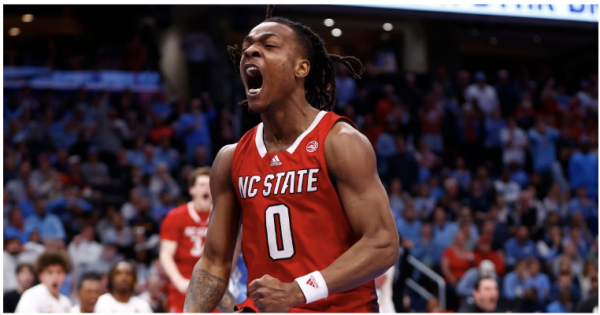
Shooting Guard: DJ Horne, Senior, NC State
Tournament Stats: 17.2 PPG, 5.4 RPG, 2.4 APG, 39.36 FG%, 33.92 3PT%
Horne didn’t have the most impressive stats out of the players on the list, but there’s no denying what he meant to NC State’s team. When they needed him to step up and make a shot, he did. I’d give a slight edge for him over DJ Burns, NC State’s big man since Horne was the only player on that Wolfpack team that gave Purdue a struggle in the Semifinal.
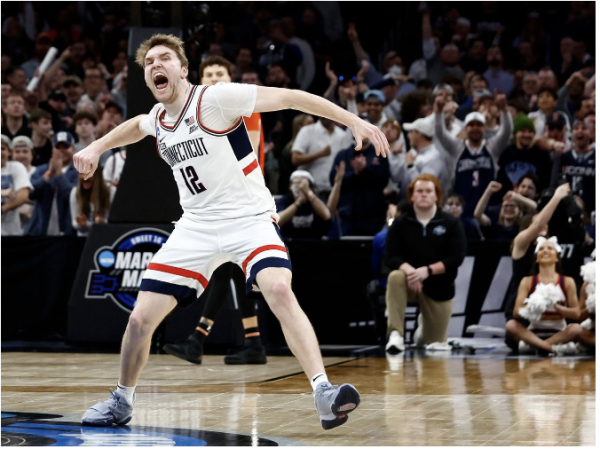
Small Forward/ 3rd Guard: Cam Spencer, Senior, UConn
Tournament Stats: 13.33 PPG, 7 RPG, 3.5 APG, 2 SPG, 46.18 FG%, 39.37 3PT%
I felt like I needed to include one of the UConn guards in the list and honestly, I had no idea which one to add before the championship game. Spencer’s savviness with the ball was second to none while he was on the court, you could tell he was a genius of the game. Defensively he brought a large presence averaging over 2 steals throughout the tournament. His rebounding ability offensively also blew me away watching the championship game against Purdue. Rarely do you see a guard, who isn’t the most athletic, grabbing offensive boards left and right.
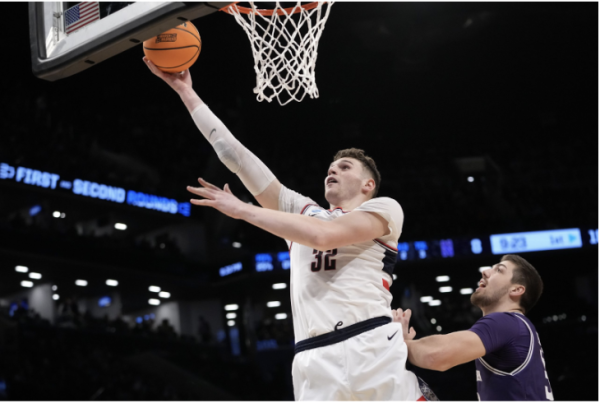
Power Forward: Donovan Clingan, Sophomore, UConn
Tournament Stats: 15.33 PPG, 8.33 RPG, 3.16 BPG, 64.4 FG%
Not enough can be said about how good Donovan Clingan is. The fact that he went from a borderline lottery pick to a projected #1 overall pick for the NBA Draft, in the span of the tournament, shows how good he truly played. While he wasn’t relied upon as much as Edey, he delivered as clinically as the Purdue center when called upon. When on the court the opposing team’s offensive efficiency plummeted. He is the real deal and I am intrigued to see how he progresses on to the professional level.
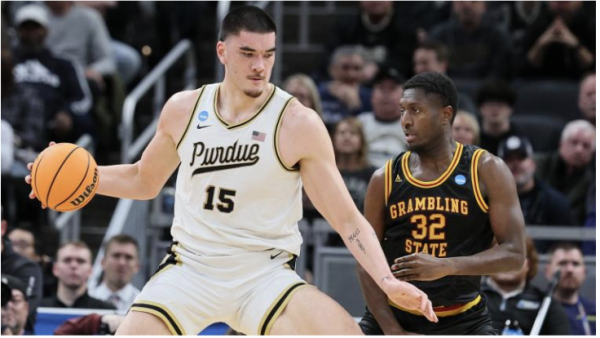
Center: Zach Edey, Senior, Purdue
Tournament Stats: 29.5 PPG, 14.5 RPG, 1.83 APG, 1.67 BPG, 65.05 FG%
It’s been a while since the college game has seen a player like Zach Edey. Not only does his monstrous size give him such a large advantage, his skill, and knowledge of the game create a formidable opponent. He only needed a national championship to “complete” college basketball, and he truly gave his all. It’s a shame that his effort didn’t pay off completely, but Purdue still made an amazing run to the final. It is not a secret that college basketball will miss Zach Edey, barring his former competition.
Image Links:
Mark Sears ©
DJ Horne ©
Cam Spencer ©
Donovan Clingan ©
Zach Edey ©


